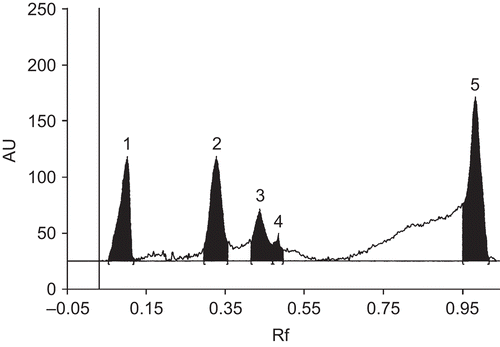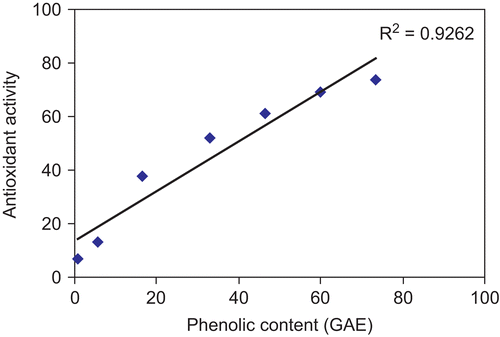Figures & data
Table 1. Effect of alcoholic extract of Amorphophallus paeoniifolius on inhibition of lipid peroxidation and H2O2 scavenging activity. (Values are mean of three replicates.)
Figure 1. Scavenging effects of A. paeoniifolius extract (APE) on DPPH radical. Butylated hydroxyl toluene (BHT) was used as a positive control. Values represent the mean ± SD (n = 3).
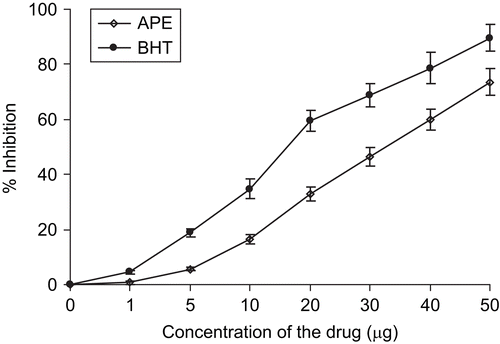
Figure 2. Scavenging effects of A. paeoniifolius extract (APE) on ABTS radical. Butylated hydroxyl toluene (BHT) was used as a positive control. Values represent the mean ± SD (n = 3).
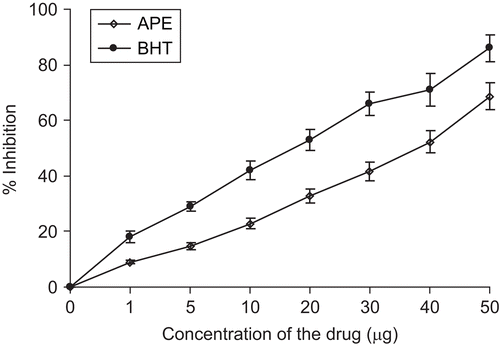
Figure 3. Presence of total phenolic content in A. paeoniifolius (APE). The phenolic content of the extract was found to be 44.58 mg GAE/g powder. Values represent the mean ± SD (n = 3).
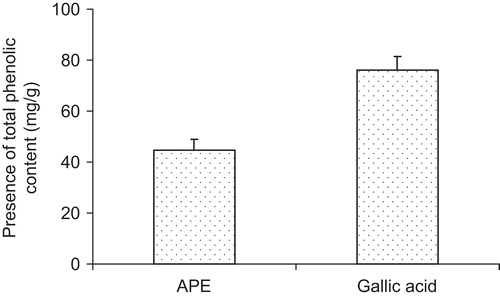
Figure 5. The HPTLC chromatogram of Amorphophallus paeoniifolius leaf extract at 260 nm. The chromatogram shows five major peaks when scanned at 260 nm using toluene: ethyl acetate: glacial acetic acid (12.5: 7.5: 0.5 v/v) as mobile phase. The three peaks (1, 3 and 4) of Rf values are gallic acid (0.06), resveratrol (0.41) and quercetin (0.47), respectively, and two others (2 and 5) remain to be identified.
